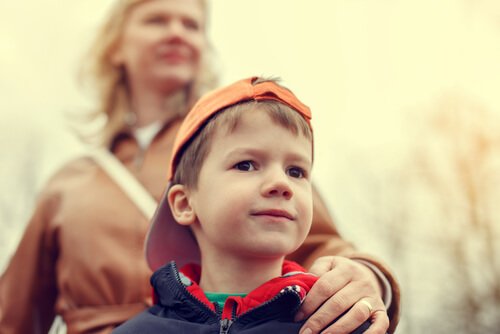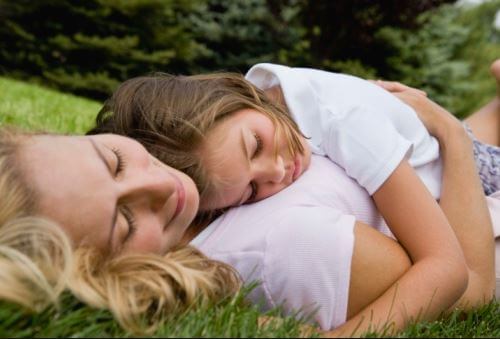Emotional Self-Control in Kids

We can teach our children about emotional self-control with patience and perseverance. The result of all this hard work will be children with a better disposition towards adversity, and calm and satisfied parents too.
How to face temper tantrums
When children start to gain more autonomy, then signs of rebellion can start to appear. If these negative signs don’t disappear by themselves, then we’ll need to act. Teaching children to regulate their emotions will prevent future permanent problems with disobedience.
Techniques to achieve emotional self-control in children
Neurological maturity in children begins at the age of six. From then on they begin to develop cognitive skills for emotional self-control. With good teaching we can learn useful strategies to try to control destructive impulses and help children channel their emotions.
A volcano about to erupt
When children are about to explode, the volcano technique can help them calm down. The idea is to teach them to visualize their interior as a volcano, with all its strength and energy. When it erupts, everything gets out of control; the children must learn to associate anger or rage with hot lava.
The idea here is that you can stop them before they reach the point of eruption. This exercise should be accompanied by deep breathing and telling children to internally repeat instructions to encourage themselves to calm down.

The traffic light
With different color cards, children can be taught to analyze their behavior. The red light (red card) appears when the situation is about to get out of control. The correct phases are:
- Red light: stop, calm down, think before acting.
- Yellow light: think about possible solutions or consequences.
- Green light: go ahead and put the best solution into practice.
Patience, learn to wait
Children must learn the ability to wait. Patience is fundamental for them to be able to achieve emotional self-control. Self-control increases the chances of being able to be patient.
Children can also be taught that, by counting to ten, it’ll be easy for their anger to disappear. Another option is to get away from what is causing them stress until they can recover their calm.
Reflection
Achieving greater emotional self-control in children also involves teaching them to reflect on things. By speaking to them you can help them analyze what they’ve done, and plan for next time when they can make better decisions. This is a post-conflict strategy, because in the heat of the moment it has no effect.
Parents: the best example
If we understand that a child’s best model is their parents, then teaching by example is vitally important. Remembering how adults react emotionally to different situations can influence children’s behavior for better or for worse. It can also help them manage their frustration.
Adults should react positively in situations of stress, fatigue and distress. They should express their feelings, breathe deeply and wait before reacting. Parents can also use sports as a useful tool to channel their children’s negative emotions.
Learning from mistakes
Every good parent will want to prevent their children from suffering, but this can sometimes be a mistake. There is no way a child can possibly grow up without experiencing frustration of different types and for different reasons.
However, it isn’t advisable to pamper children too much, as this can lead to an inability to face future challenges.

To achieve emotional self-control in children, the ideal goal is to encourage them to channel their frustrations. Certain phrases can help them do this:
“What about if we start with the easiest part?” “How can I help you?” “What part can you do on your own?” Another very effective phrase is: “Let’s have a rest and try again later!”
A quiet place
Inside the house, or in the classroom, you can prepare a special place where the child can go when he needs to calm down. There must be books, toys, paper, paintings, a blackboard or anything else that will help him feel calm.
Anti-stress balls
Anti-stress balls work for adults, but also for children, and especially if they make them themselves. You only need a thick balloon filled with birdseed or rice. The only requirement is that they must fit in the child’s hand.
So, here you have some advice which we hope will be useful for helping your children control their emotions and channel their frustrations.
We can teach our children about emotional self-control with patience and perseverance. The result of all this hard work will be children with a better disposition towards adversity, and calm and satisfied parents too.
How to face temper tantrums
When children start to gain more autonomy, then signs of rebellion can start to appear. If these negative signs don’t disappear by themselves, then we’ll need to act. Teaching children to regulate their emotions will prevent future permanent problems with disobedience.
Techniques to achieve emotional self-control in children
Neurological maturity in children begins at the age of six. From then on they begin to develop cognitive skills for emotional self-control. With good teaching we can learn useful strategies to try to control destructive impulses and help children channel their emotions.
A volcano about to erupt
When children are about to explode, the volcano technique can help them calm down. The idea is to teach them to visualize their interior as a volcano, with all its strength and energy. When it erupts, everything gets out of control; the children must learn to associate anger or rage with hot lava.
The idea here is that you can stop them before they reach the point of eruption. This exercise should be accompanied by deep breathing and telling children to internally repeat instructions to encourage themselves to calm down.

The traffic light
With different color cards, children can be taught to analyze their behavior. The red light (red card) appears when the situation is about to get out of control. The correct phases are:
- Red light: stop, calm down, think before acting.
- Yellow light: think about possible solutions or consequences.
- Green light: go ahead and put the best solution into practice.
Patience, learn to wait
Children must learn the ability to wait. Patience is fundamental for them to be able to achieve emotional self-control. Self-control increases the chances of being able to be patient.
Children can also be taught that, by counting to ten, it’ll be easy for their anger to disappear. Another option is to get away from what is causing them stress until they can recover their calm.
Reflection
Achieving greater emotional self-control in children also involves teaching them to reflect on things. By speaking to them you can help them analyze what they’ve done, and plan for next time when they can make better decisions. This is a post-conflict strategy, because in the heat of the moment it has no effect.
Parents: the best example
If we understand that a child’s best model is their parents, then teaching by example is vitally important. Remembering how adults react emotionally to different situations can influence children’s behavior for better or for worse. It can also help them manage their frustration.
Adults should react positively in situations of stress, fatigue and distress. They should express their feelings, breathe deeply and wait before reacting. Parents can also use sports as a useful tool to channel their children’s negative emotions.
Learning from mistakes
Every good parent will want to prevent their children from suffering, but this can sometimes be a mistake. There is no way a child can possibly grow up without experiencing frustration of different types and for different reasons.
However, it isn’t advisable to pamper children too much, as this can lead to an inability to face future challenges.

To achieve emotional self-control in children, the ideal goal is to encourage them to channel their frustrations. Certain phrases can help them do this:
“What about if we start with the easiest part?” “How can I help you?” “What part can you do on your own?” Another very effective phrase is: “Let’s have a rest and try again later!”
A quiet place
Inside the house, or in the classroom, you can prepare a special place where the child can go when he needs to calm down. There must be books, toys, paper, paintings, a blackboard or anything else that will help him feel calm.
Anti-stress balls
Anti-stress balls work for adults, but also for children, and especially if they make them themselves. You only need a thick balloon filled with birdseed or rice. The only requirement is that they must fit in the child’s hand.
So, here you have some advice which we hope will be useful for helping your children control their emotions and channel their frustrations.
All cited sources were thoroughly reviewed by our team to ensure their quality, reliability, currency, and validity. The bibliography of this article was considered reliable and of academic or scientific accuracy.
- Bisquerra, R. (2011). Educación emocional. Propuestas para educadores y familias. Bilbao: Desclée de Brower. http://otrasvoceseneducacion.org/wp-content/uploads/2019/04/Educación-Emocional.-Propuestas-para-educadores-y-familias-Rafael-Bisquerra-Alzina-2.pdf
- Fernández-Berrocal, P., & Pacheco, N. E. (2002). La inteligencia emocional como una habilidad esencial en la escuela. Revista Iberoamericana de educación, 29(1), 1-6.
- Goleman, D. (2010). La práctica de la inteligencia emocional. Editorial Kairós.
- López, M. (2008). La integración de las habilidades sociales en la escuela como estrategia para la salud emocional. Psicología sin fronteras: revista electrónica de intervención psicosocial y psicología comunitaria, 3(1), 16-19.
- Shapiro, L. E. (2002). La salud emocional de los niños (Vol. 16). Edaf.
This text is provided for informational purposes only and does not replace consultation with a professional. If in doubt, consult your specialist.








